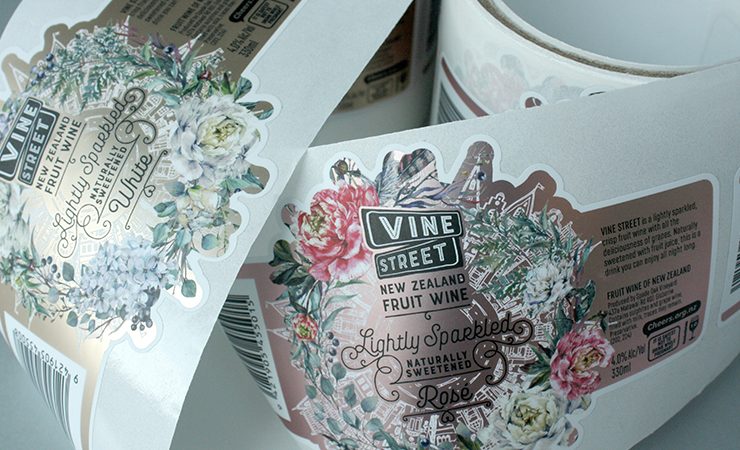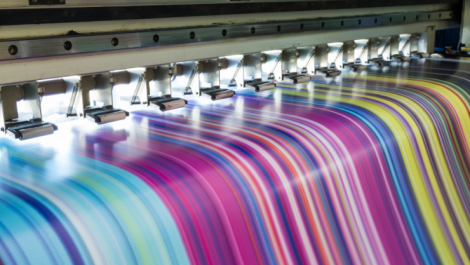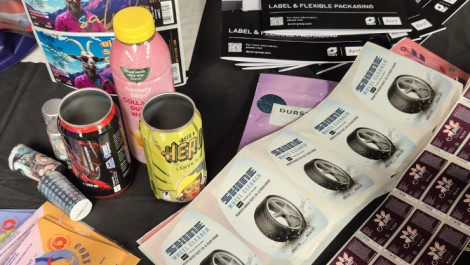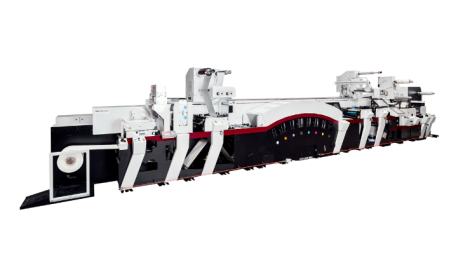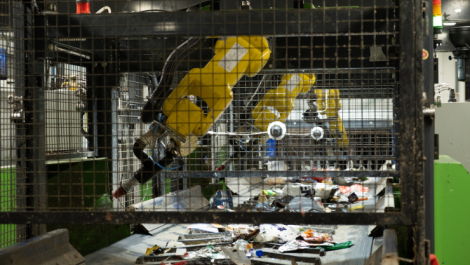The wines and spirits market, much like digital label and package printing and converting, is expected to see strong growth over the coming years.
A recent report published by Allied Market Research (AMR), estimates that the global luxury wines and spirits market will reach a value of $1411 billion by 2027, registering a CAGR of 4.9% from 2020 to 2027.
Covid-19 has of course impacted the market, with on-trade sales severely hampered by stay-at-home orders, lockdowns, and the closure of ‘non-essential’ retail. The AMR report further notes restrictions on import and export activities have created a huge supply-demand gap, and impacted the revenue generated from retail stores.
The spirits segment contributed to the largest share of the $970 billion market value in 2019, accounting for more than three-fifths of the total. It is predicted to maintain its dominant position during the forecast period, however wines/champagne is expected to register the highest CAGR of 5% from 2020 to 2027. Based on distribution channel, the retail segment accounts for the largest share and is expected to maintain this position throughout the forecast period. However, the e-commerce segment is expected to achieve the highest CAGR, at 5.1% during the forecast period.
‘With on-trade struggling, off-trade and retail sales have held up well,’ affirms Paul Roscoe, managing director at Berkshire Labels. ‘More people are drinking at home, and there has been a big growth in the choice and variety of products, with more small batches and innovation happening more frequently.’
AWA Alexander Watson Associates’ Global Wine Label Market 2020 AWAreness Report notes that the packaging of choice for wine remains glass bottles, driving demand for labels, although there is also increasing use of PET bottles and pouches, fuelled by ‘on the go’ consumer consumption.
Global spirits brand Bacardi plans to put the world’s most sustainable spirits bottle on the shelf by 2023. The new 100% biodegradable bottle will replace 80 million plastic bottles – 3000 tons of plastic – currently produced by Bacardi across its portfolio of brands every year. Petroleum-based plastics will be replaced by Danimer Scientific’s Nodax PHA biopolymer, which is derived from oils of plant seeds.
The art of decoration
Wines and spirits labels are archetypal ‘prime label’ applications and, according to Stelios Manousakis, head of technical sales/product owner, web-fed solutions at Mouvent, ‘the art of product decoration.’
Enrica Lodi, who is responsible for marketing and sales at Cartes, sees labels for wines and spirits as, ‘increasingly reaching out from the bottle towards the consumer, almost winking at him from the shelf, attracting his eye.’
Various print and finishing technologies lend themselves to this. For example, German label printer InForm Etiketten has added a Xeikon CX3 to increase its production capacity and flexibility, whilst balancing its efforts to be more sustainable and environmentally conscious.
Dr Benjamin Rüdt von Collenberg, COO at InForm Etiketten, says, ‘Labels for wines and luxury spirits are design objects, required to carry emotions through high-quality finishing. We have the right attitude and the right technology, particularly with digital print.’
Finishing and embellishment is of high value to this market too. Xeikon has launched Fusion Embellishment Unit (FEU), a finishing system based on MGI technology that provides UV spot varnish, tactile varnish, foiling, 3D textures and holograms across a wide range of substrates including clear-on-clear, BOPP and paper facestocks, up to natural structured papers.
The Cartes portfolio includes GT360 machines, which allow printing, embellishment and converting, and are focused on markets such as wines, spirits and cosmetics. They offer laser die-cutting configurable with varnishing, and die-cutting processes without interruption and with minimal operator intervention, permitting ‘dynamic workflows’.
Ms Lodi says, ‘It is very important to be able to identify new technological solutions to make the labels of small ingenious masterpieces, reproducible on an industrial scale.’
Screen printing is noted as essential for the wine and spirits industry, with its multiplicity of effects such as high-build, intense colours and metal doming. Some Cartes customers have machines with seven screen printing units to produce high quality artistic results at very high speeds (up to 7000 cycles per hour).
One of Cartes’ latest technologies is Jet D-Screen (JDS), a digital screen printing unit for creating high build effects and metal doming, including the possibility to foil high build varnish and print Braille effects.
‘If we think about this digital screen printing unit installed on a laser die-cutting machine, we have a perfect embellishment and converting line for an immediate finishing of labels processed with digital machines,’ states Ms Lodi.
Oregon, US-based Craftsman Label has installed a standalone hot foil unit from Grafisk Maskinfabrik (GM) to finish both digital and flexo printed work.
Craftsman Label is a full-service provider with conventional flexo and digital printing presses. The company specialises in high-quality labels and flexible packaging and is particularly well-known as a supplier to the high-end wine market. The GM HOTFB330 has replaced an older foiling and embossing unit to improve production speeds and capabilities.
Mr Roscoe explains how his company offers an almost endless combination of print and finishing capabilities for wines and spirits customers, using its trio of HP Indigo digital presses and fleet of A B Graphic Digicon finishing lines.
‘There’s almost nothing we can’t do on our Digicons,’ he says, ‘from scratch and sniff and glow-in-the-dark, to screen printing, high-build varnishes and tactile embellishment.’
Embossing is an area where Mr Roscoe notes developments are ongoing, with hot foiling coupled with two A B Graphic Big Foot modules to ‘create great effects’. He adds that with the higher selling price that is often associated to such products, features are sought to help labels and packaging stand out.
‘These are high-ticket items, so they will often tick the box on a few more of these when ordering. By offering a suite of options, we can then work to the budget and desired outcome.’
An example is that of Heppington Vineyard, a boutique UK vineyard that sought a unique wine label for its inaugural Pinot Gris harvest. Printed digitally on one of Berkshire Labels’ HP Indigo digital presses on Arconvert Picasso X-Dry material, the label was finished using multiple golds and hot foils, including a Lumafin transparent gold. The design incorporated printed tones underneath the translucent foil to create a marble effect. Embossing was added to complement the layered design. A tactile gloss silk screen varnish was also added to provide the sea element with a ‘wet’ appearance.
Award-winning
Awards ceremonies also regularly highlight what can be achieved with digital printing for the benefit of the wines and spirits market.
The World Label Awards (WLA) is an annual showcase of the best label production from markets around the world. Recent winners include Soar Print, which was placed first in the ‘Digital Print – Wine/Spirits’ category at the WLA 2019 competition.
Soar Print is a multi-award winning label and general commercial printer based in Auckland, New Zealand. It was put forward by local association SALMA. The WLA winning wine bottle labels were commissioned by Vine Street, a New Zealand fruit wine producer, and were printed on an HP Indigo WS6800 digital press. They were printed on Manta OPP silver metallised SYN52gsm, and sealed with a matte laminate before die-cutting.
Multi-Color Corporation, Australia was also placed first in the ‘Digital Print – Wine/Spirits’ category for ‘The Quickening’. This label went on to be crowned ‘Best of the Best’ for Digital Printing in the WLA 2019 competition.
The design of ‘The Quickening’ is associated with new life, with the blue life force spirit seen emanating from the soil with the ethereal lines highlighted using silver hot foil. The story is included in the design of the label which is printed on a slightly cream paper substrate that softens the impact of the landscape illustration.
In the most recent HP Inkspiration Americas Awards, MCC Label of Napa, California won in the speed-to-market category for a label produced for Christian Tietje Wines’ Farewell to Kings. This was a rush job to meet bottling and marketing timelines, with MCC noted as having ‘raised the bar’ for production speed for a high-end, elaborate label. The design and finishing were required to achieve the desired look of a king, with the label and art ‘dark yet subtle’ and producing an artistic effect, while embossing accentuated the print. MCC streamlined the artwork review into a 24-hour process, and combined this with digital printing to enable production in record speed. The base substrate used was an 80# estate8 WS S100R (1.2mil clear polyester liner) sold by Fasson/Avery Dennison. The hot stamp foil is an MTC28621 from Kurz.
Another winning with its use of LEP printing was Amberley Labels, which claimed the top prize in the ‘Digitally printed labels’ category at the Digital Printer Awards 2019. Its Jack Vettriano Gin label was printed on an HP Indigo WS6800 on Avery Dennison’s Martele Blanc material.
Whilst these exampled applications have been printed using toner-based digital printing, Mr Manousakis notes, ‘Wine and spirits labels are the decathlon of inkjet and printhead technology. These require a delicate balance between material supplier, printer, converter and applicator in a very competitive market that clearly converts to fully digital, based on the run length and growth of private label.’

